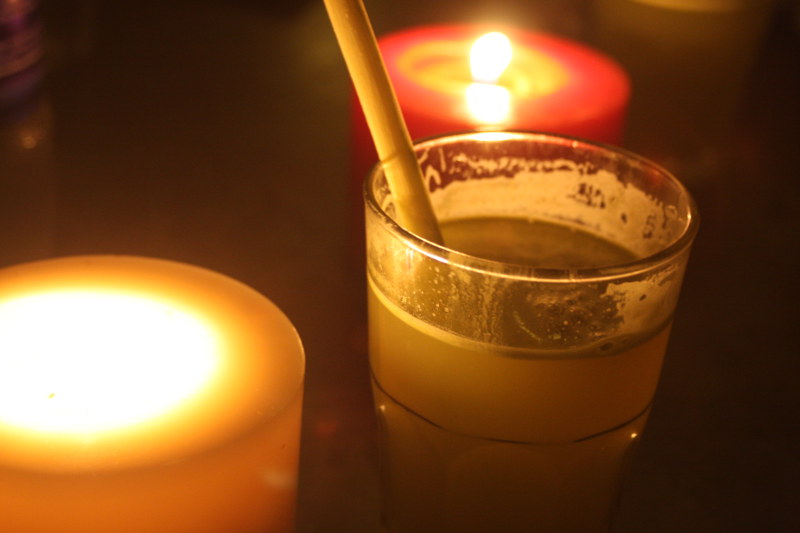“The ceiling tiles are 150 years old. They come from Mangalore because they fit the design vision. We wanted to make sure they were used instead of destroyed.”
“How did you come up with the design vision?”
“See those bottles on the wall?” He points to a whole slew of empty alcohol bottles that adorn one part of the wall. “That’s how we came up with the design vision.”
And, it’s a fabulous vision: using custom postage stamps to illustrate the menu, antiques to create an interesting and eclectic atmosphere, and green practices to demonstrate their values.
Everything in the restaurant is either made in the restaurant, reused/re-purposed from recyclable materials, or utilizes traditional Indian cottage industry in its making. The owner deliberately seeks out traditional Indian craftsmen to employ rather than succumbing to modern pressures.
The menu. Handwritten and uses custom postage stamps to illustrate the food.
Cane sugar juice. Yummy!
The kitchen staff. They were absolutely thrilled when we popped in to say hello.
The food. Amazing. None of us had even heard of the menu items before. It was sold as traditional Mangalorean food. You can see more about the food here.
The ceiling with rice paper lanterns. The inside tiles (the ceiling is layered twice) are the ones that are 150 years old. The outside tiles are more recent because they weather quickly.
Finally, a traditional grass rice container. This is what rice historically comes in from the rice patties in India. Wrapping the grains this way is becoming a lost art form. No one really knows the kind of rice inside the container — so a special tool is used to extract a sampling of the grains. In this container, the rice can last hundreds of years.
